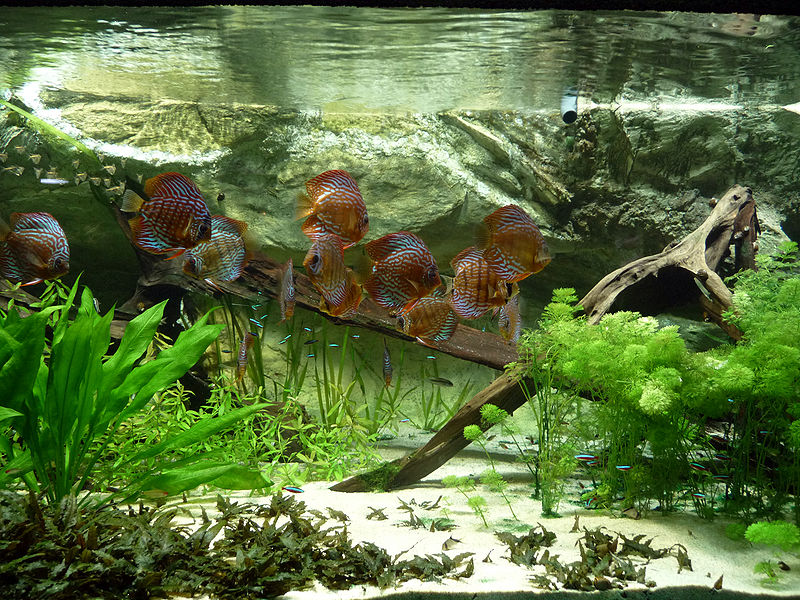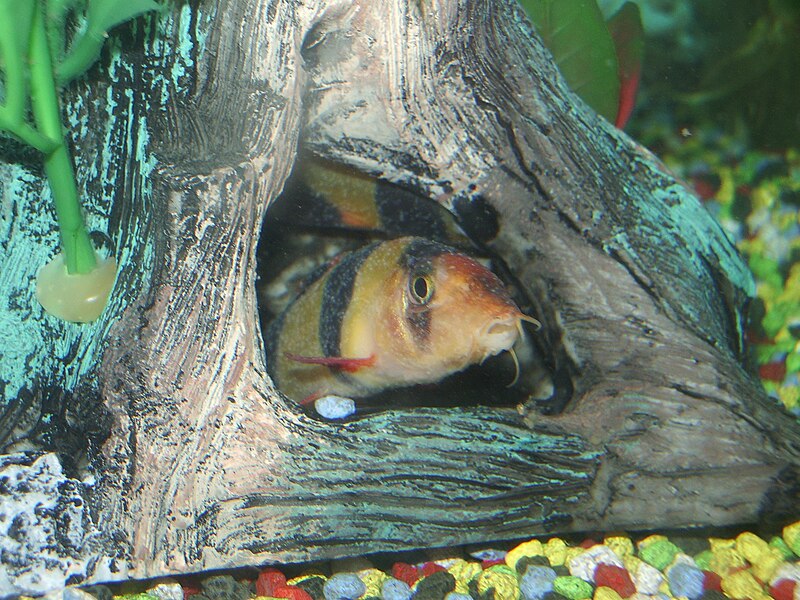 Hello, Frank Indiviglio here. October, 2012’s Hurricane Sandy wrecked havoc on fish keepers and public aquariums in the Northeastern USA. My own collection, which houses several 20-30 year-old catfishes, loaches and aquatic amphibians, suffered only a single loss. I owe a debt of gratitude to the dedicated folks at That Fish Place-That Pet Place, who shipped much-needed supplies to me in record time, despite the disastrous weather. The public aquariums for which I consult are now working frantically to limit losses; I’ll provide updates via Twitter.
Hello, Frank Indiviglio here. October, 2012’s Hurricane Sandy wrecked havoc on fish keepers and public aquariums in the Northeastern USA. My own collection, which houses several 20-30 year-old catfishes, loaches and aquatic amphibians, suffered only a single loss. I owe a debt of gratitude to the dedicated folks at That Fish Place-That Pet Place, who shipped much-needed supplies to me in record time, despite the disastrous weather. The public aquariums for which I consult are now working frantically to limit losses; I’ll provide updates via Twitter.
Most aquarists know what steps to take during power outages, so today I’d like to focus on several points that, in my experience, are sometimes over-looked.
Filter Care and Bacteria Die-offs
When power fails, submersible, corner, and other internal filters should be removed from the aquarium. When oxygenated water is flowing through a filter, waste material is processed by beneficial aerobic bacteria, and ammonia is converted to less toxic nitrites and nitrates (please see this article). Once the flow of water stops, the resident beneficial bacteria perish. Without aerobic bacteria, your filter becomes a source of decomposing organic material, quickly poisoning the already-stressed aquarium inhabitants.
As the contents of external aquarium filters are not in direct contact with the water, they will not immediately add to the pollution problem. However, these filters should be disconnected because when electric power is restored, they will pump ammonia and other toxins into the tank.
When Power Returns
Before being re-connected, the filtration material in both internal and external filters should be replaced or rinsed.
Under normal circumstances, you can re-seed a newly-cleaned filter with aerobic bacteria by simply leaving in a bit of old/used filter material; alternatively, you can replace only a portion of the material each time the filter is serviced. However, after a power outage, your filters will not contain living bacteria. Nutrafin Cycle can be used to reintroduce live beneficial bacteria to your filters. I also add it after regular filter changes, and a colleague who works at a major frog-breeding laboratory vouches for this useful product as well.
You may need to completely re-cycle your aquarium (please see article below), but a variety of factors will come into play. Please post any questions you may have on cycling below.
“Insurance”: Check Valves
Check valves are an inexpensive (as in “less than $2”) yet often over-looked means of limiting damages during power failures. These simple devices prevent water from flowing up airline tubing and out of the tank when pumps shut down. Do you really need ruined pumps, filters, rugs and floors – not to mention angry partners and/or downstairs neighbors – on top of other woes?!
Parasite and Disease Concerns
Spiking ammonia levels and cold temperatures depress fish immune systems, as does the often rapid rise in temperature once power returns. Parasites, harmful bacteria and other pathogens are always present in the aquarium, even when conditions are ideal. Healthy fish can fight off many such micro-organisms, but they often become ill when their immune systems are not working at full throttle.

A variety of other problems may develop, even after conditions are back to normal. For example, food consumed prior to the outage may remain undigested and lead to a serious infection (this, however, is more commonly seen in chilled reptiles, which have slower metabolisms than most fishes). Please post any questions you may have concerning diseases below.
Oxygen Deprivation
The water’s oxygen level drops rapidly once pumps shut down. The effects of this are modified slightly by the fact that cold water holds more oxygen than warm water; also, cold fishes need less oxygen to survive. Catfishes, loaches, gouramis and a variety of others can effectively utilize atmospheric oxygen, and so may fare well (most other fish will gulp air at the surface, but they cannot survive for long in this manner).
Aerators and Oxygen Tablets
There are a number of things you can do to provide oxygen for your fishes and invertebrates during power failures. Battery-operated aerators are very effective (I rely on them when collecting fishes for public aquariums as well). The Penn Plax Silent Air B-11 is especially useful, as it turns on automatically when electricity fails. Oxygen Stones – tablets that create bubbles as they dissolve – should also be on hand in case you run out of batteries for your aerators.
Plants, Manual Aeration, Water Changes
Live plants, especially those that do well in low-light conditions, can make a real difference in oxygen levels. I credit Java Moss for helping to save a number of my fishes during the recent hurricane. Java Moss lives quite well in my aquatic insect tanks, which receive only ambient room light, and survived 6 days in near total darkness in my fish aquariums.
Don’t forget manual aeration. By simply scooping up some water and pouring in into your tank from above, you can significantly raise oxygen levels.
Partial water changes will add oxygen while reducing toxin levels. Water leaves my tap at 60 F, which is a bit warmer than were my aquariums at the height of the recent storm. A few water changes will go a long way in helping your animals to survive.
Invertebrate Care
Crayfishes, crabs, starfishes and many other aquatic invertebrates can survive by breathing atmospheric oxygen. However, most cannot reach the water’s surface, and so are best kept in damp moss or shallow aquariums during power outages. Please write in below for further details.
My Fishes
My collection did very well, thanks in part to the efforts of the kind folks at That Fish Place-That Pet Place (see above). My European Weatherfishes, Pumpkinseed Sunfishes and other temperate species continued to forage, even at 56 F, but I fed them very little due to water quality concerns. My tropical fishes and invertebrates survived, but I continue to monitor them carefully.
What’s Next…What Can I Do?
Even after all is back to normal, watch your pets carefully for signs of the concerns mentioned above. Please write in for more information on hurricane-related issue.
Please check out my posts on Twitter and Facebook. Each day, I highlight breaking research, conservation news and interesting stories concerning just about every type of animal imaginable. I look forward to hearing about your interests and experiences as well, and will use them in articles when possible.
Please also post your questions and comments below…I’ll be sure to respond quickly.
Thanks, until next time,
Frank Indiviglio
Further Reading
The Maritime Aquarium’s Hurricane Response
Hurricane’s Effect on the Coney Island Aquarium
Discus Aquarium image referenced from wikipedia and originally posted by Citron
 That Fish Blog – Aquarium Advice and Information
That Fish Blog – Aquarium Advice and Information

One comment
Pingback: ativan